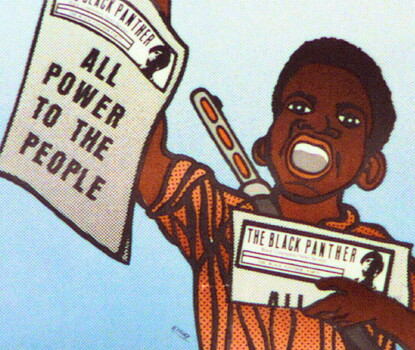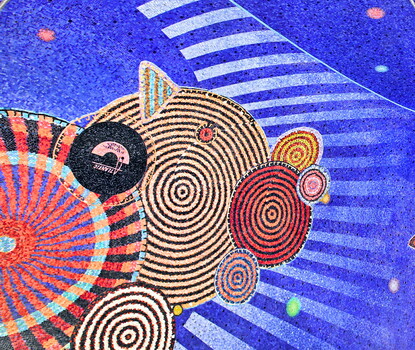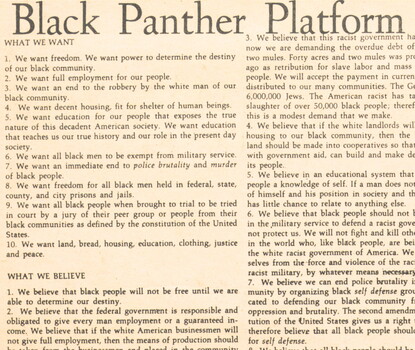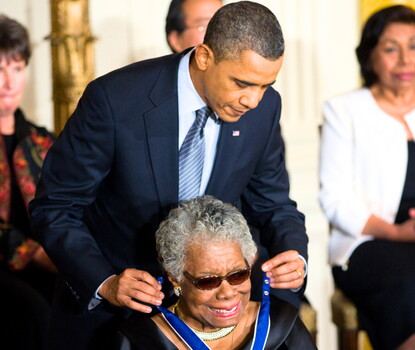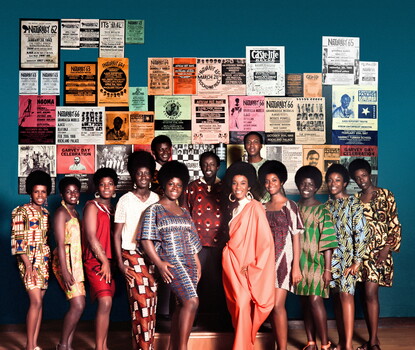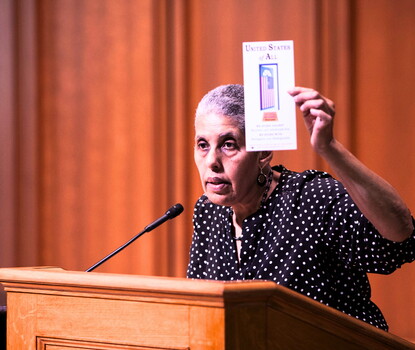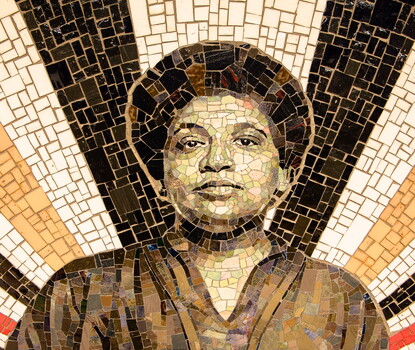Explore the intertwining of politics, music, literature, visual art, and philosophical theory in the twentieth century. Topics may include:
-
4.9 Black Religious Nationalism and the Black Power Movement
-
4.13 The Black Feminist Movement, Womanism, and Intersectionality
Image Source: Gatson, Rico. Beacons (2018) © Rico Gatson, NYCT 167 St. Commissioned by MTA Arts & Design. Audre Lorde portrait derived from a photograph by Jack Mitchell. Photo: Seong Kwon.

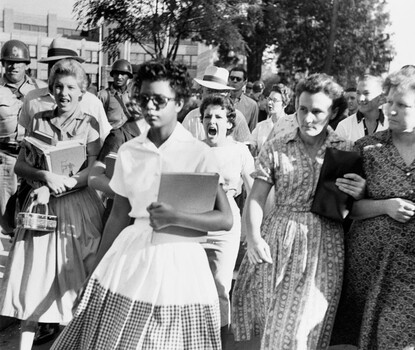
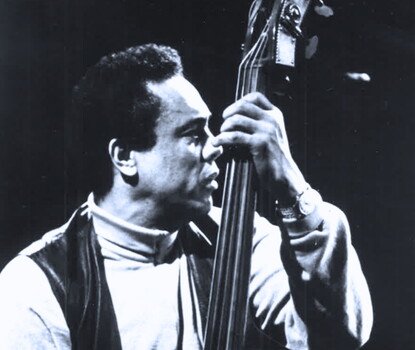
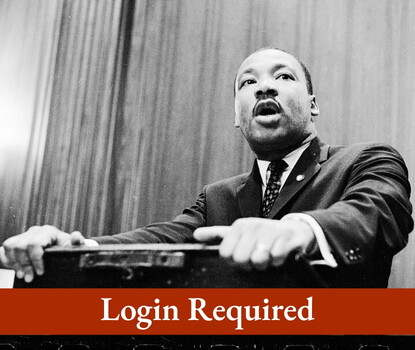

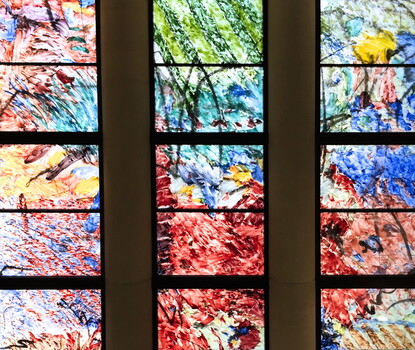

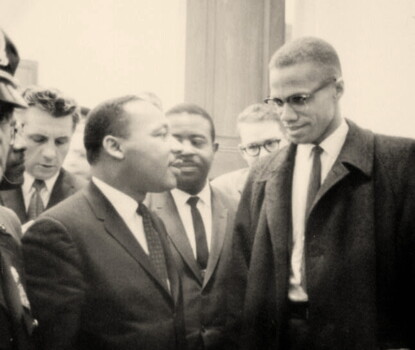
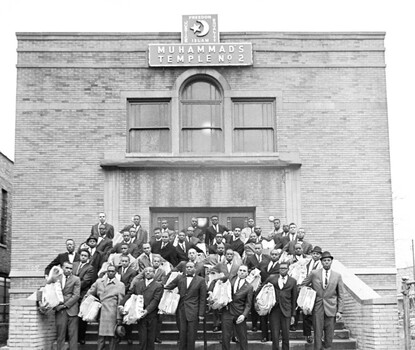
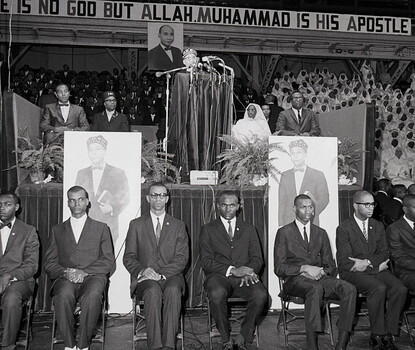
![A lithographic print juxtaposing two black faces stylized as African masks framed by yellow circular emblems with a black panther in the center. The words [BLACK IS / BEAUTIFUL] are inscribed around each panther. The print appears in quadrants, with one face in three-quarter view in the top left and the other face appearing straight on in the lower left. The panther emblems appear in a grid in the top right and bottom left quadrants, with the top and bottom rows extending across the full print.](/sites/default/files/styles/card_tall_1x/public/2025-04/ElizabethCatlett.jpg?h=e10800f9&itok=2NTXR54q)
